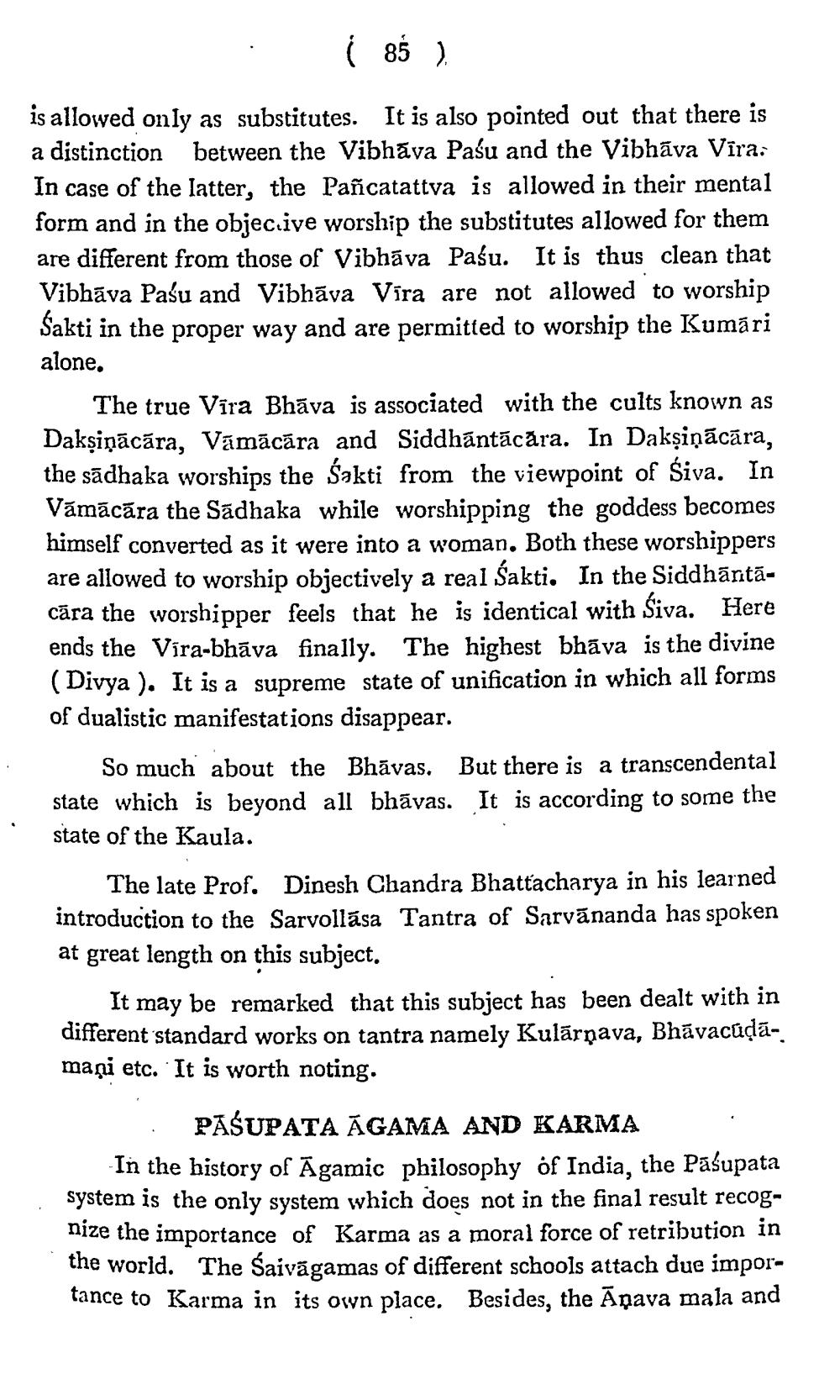________________
.
( 85 )
is allowed only as substitutes. It is also pointed out that there is a distinction between the Vibhava Paśu and the Vibhāva Vīra: In case of the latter, the Pañcatattva is allowed in their mental form and in the objec.ive worship the substitutes allowed for them are different from those of Vibhāva Paśu. It is thus clean that Vibhāva Paśu and Vibhāva Vira are not allowed to worship Sakti in the proper way and are permitted to worship the Kumāri alone.
The true Vira Bhāva is associated with the cults known as Dakşiņācāra, Vámācāra and Siddhāntācāra. In Dakşiņācāra, the sādhaka worships the Śakti from the viewpoint of Śiva. In Vāmācāra the Sādhaka while worshipping the goddess becomes himself converted as it were into a woman. Both these worshippers are allowed to worship objectively a real Sakti. In the Siddhāntācāra the worshipper feels that he is identical with Śiva. Here ends the Vira-bhāva finally. The highest bhāva is the divine ( Divya ). It is a supreme state of unification in which all forms of dualistic manifestations disappear.
So much about the Bhāvas. But there is a transcendental state which is beyond all bhāvas. It is according to some the state of the Kaula.
The late Prof. Dinesh Chandra Bhattacharya in his learned introduction to the Sarvollăsa Tantra of Sarvānanda has spoken at great length on this subject.
It may be remarked that this subject has been dealt with in different standard works on tantra namely Kulārnava, Bhāvacúdāmaņi etc. It is worth noting.
PASUPATA ĀGAMA AND KARMA In the history of Āgamic philosophy of India, the Pasupata system is the only system which does not in the final result recognize the importance of Karma as a moral force of retribution in the world. The saivāgamas of different schools attach due importance to Karma in its own place. Besides, the Āpava mala and




